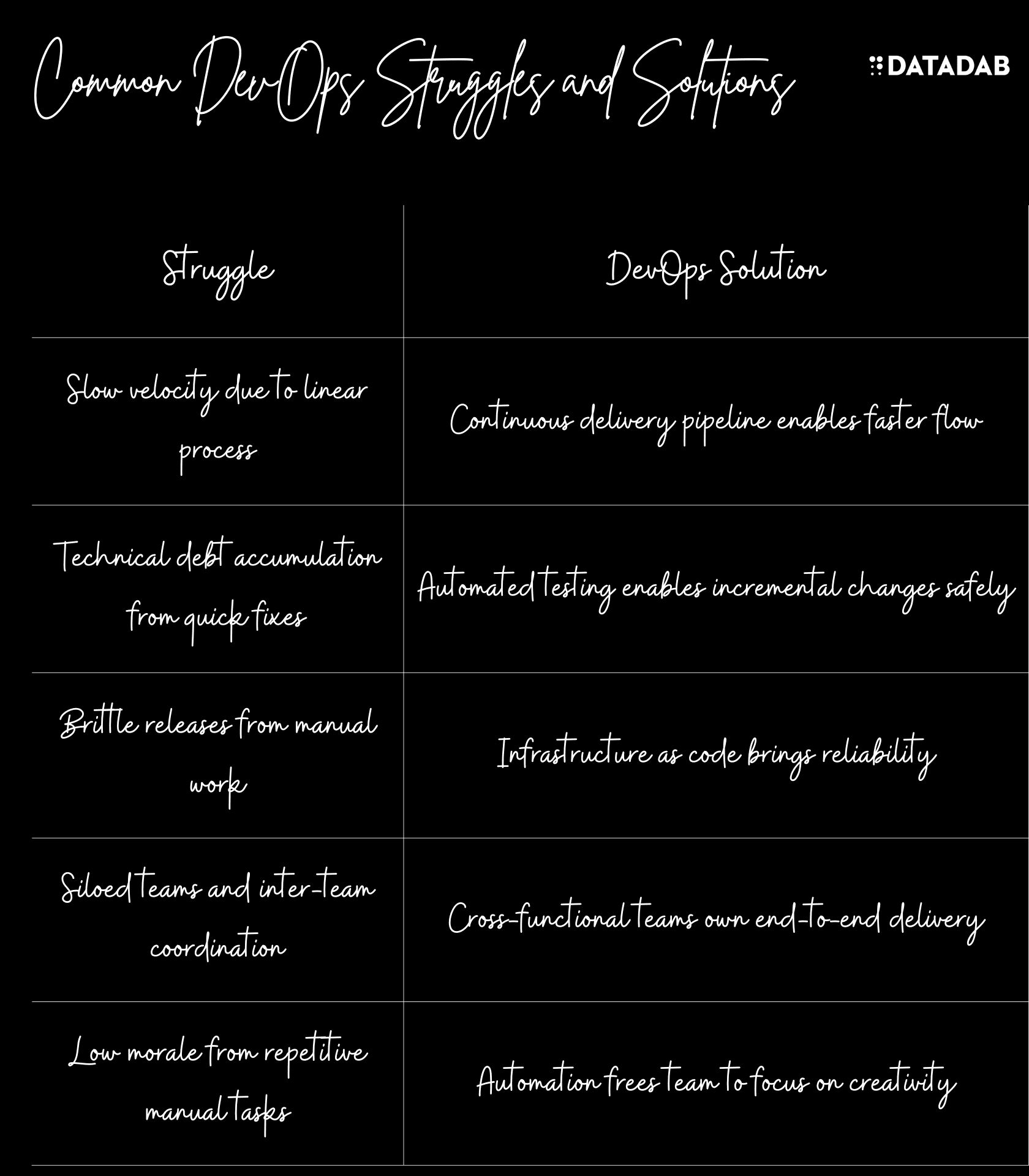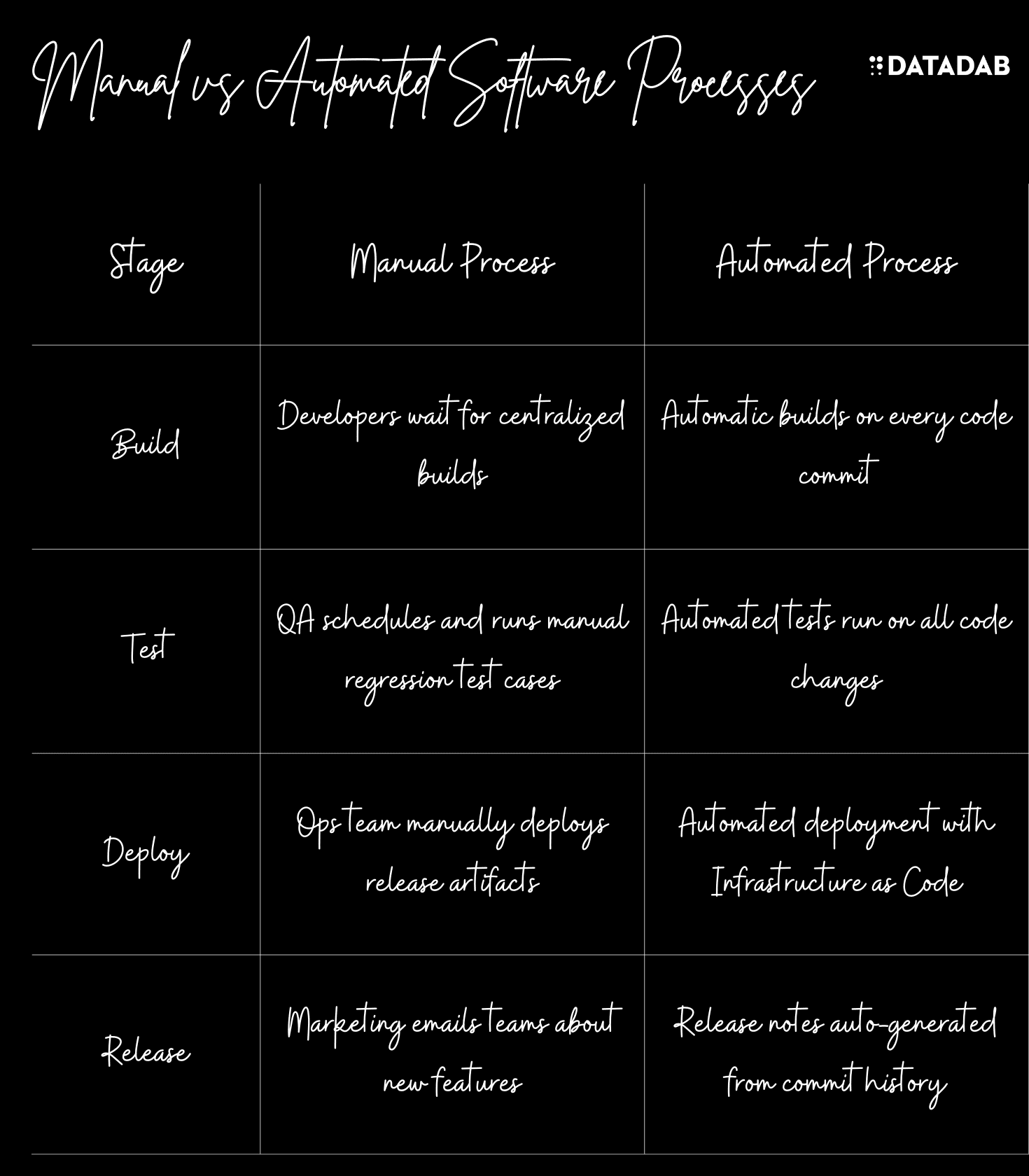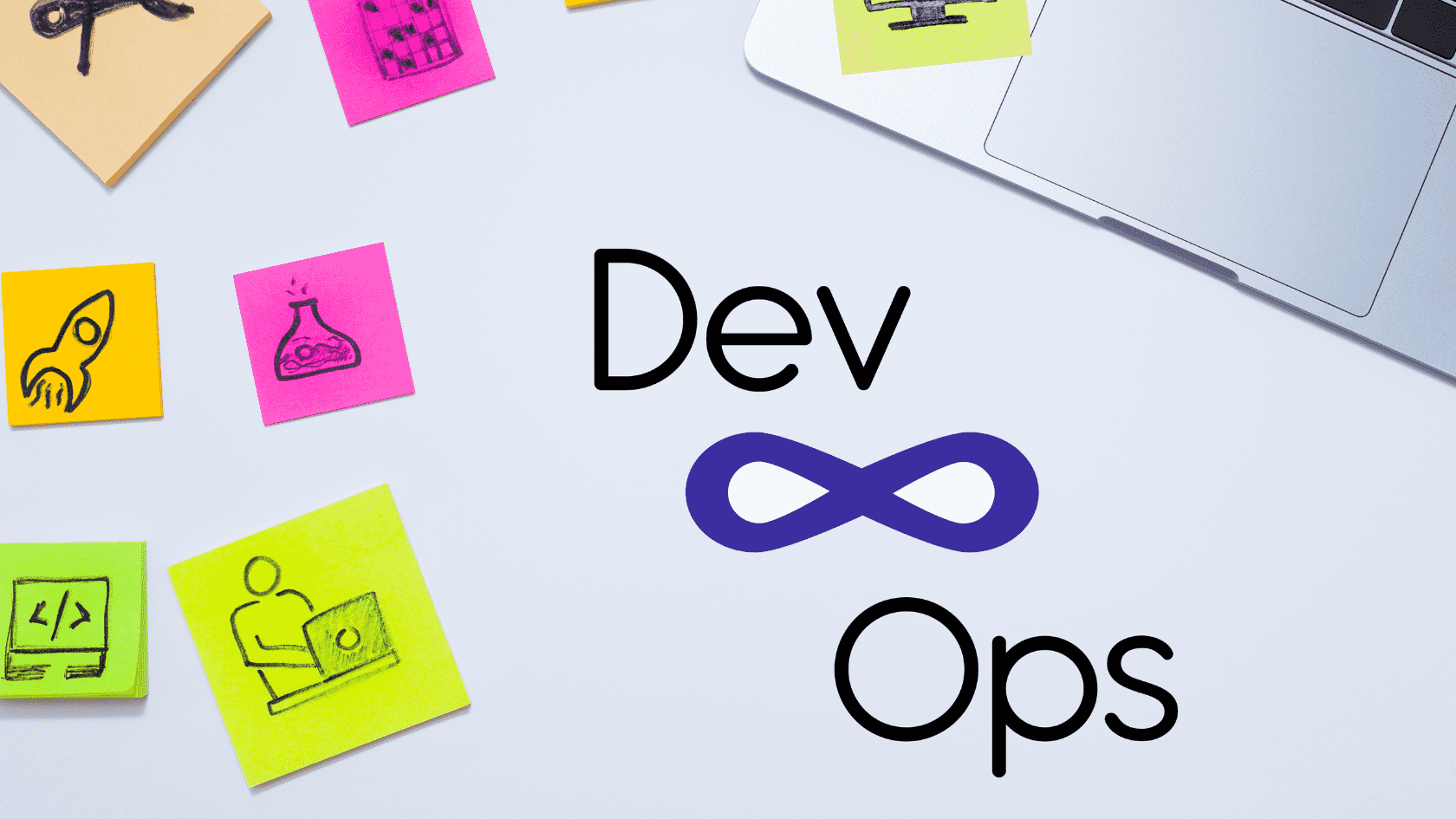"We live and breathe stories. They move us, inspire us, and connect us."
- Annette Simmons
DevOps has revolutionized how modern software teams operate. Automating the build, test, and deployment pipeline unlocks velocity, quality, and reliability that was unimaginable just a decade ago. However, convincing non-technical stakeholders to invest in DevOps remains an uphill battle. The benefits don't always resonate beyond engineering.
This is where narrative comes in. Savvy marketers use storytelling to translate DevOps into compelling business outcomes. By framing the pitch around stakeholder struggles, you engage prospects on an emotional level. This essay will dive deep into narrative techniques to showcase your DevOps platform as the hero.

The Struggle of Speed
Every company aims to move fast, but bottlenecks in the software process stifle velocity. Marketing campaigns linger in review while engineers work through backlogged features. Product teams crave rapid iteration to validate ideas before the competition. Executives face pressure from the board to accelerate growth and innovation.
Your DevOps platform promises the velocity they desperately want. But rather than leading with speed, tell a story of stalled innovation:
Acme Construction developed a breakthrough sensor feature to prevent overheating in excavators. This innovation would leapfrog their competitors. But Acme's cumbersome build process meant getting the sensor to market would take 9 months. By then, competitors may have seized Acme's first-mover advantage.
This narrative frames your DevOps platform as the solution to crippled innovation. It taps into the prospect's deepest anxiety around falling behind. Storytelling evokes emotion rather than merely stating benefits.
DevOps Story Canvas
Use this worksheet to craft a compelling narrative for your DevOps transformation.
Struggle (What is the problem/tension?)
- Slow feature velocity
- Technical debt accumulation
- Brittle releases
- Silos between teams
- Manual, repetitive tasks
Hero (How will you resolve the struggle?)
- Automated testing catches defects immediately
- Continuous delivery pipeline
- Infrastructure as code
- Unified cross-functional team
- Monitoring provides reliability
Villain (What is causing the struggle?)
- Linear waterfall process
- Lack of test automation
- Infrastructure configuration drift
- Throw-it-over-the-wall mentality
- Reliance on tribal knowledge
Sidekicks (Who will join the hero?)
- Developers own testing
- Ops contributes automation
- QA focuses on risk rather than repetition
- Security shifts left
- Management provides air cover
Transformation (How will the hero's journey change things?)
- Faster time-to-market for new features
- More stable releases with faster recovery
- Higher team morale and productivity
- Closer alignment with business outcomes
- Ability to compete on pace of innovation
Call to Adventure (How will you inspire others to embark on the journey?)
- Share success stories and case studies
- Highlight the urgency of digital transformation
- Get executives to publicly commit to the vision
- Empower teams to reimagine their roles
- Celebrate small wins and milestones

The Peril of Technical Debt
Legacy systems and technical debt accumulate over time. Eventually, developers spend more time maintaining outdated code than building new features. Position your DevOps platform as the knight who slays the monster of technical debt:
At Fabrikam, years of quick fixes and band-aid solutions made their ecommerce platform unwieldy. Developer productivity hit rock bottom. Even simple changes took days due to tangled dependencies. Fabrikam's executives demanded new mobile and AI features to stay competitive. But technical debt had trapped their engineers in an endless maintenance nightmare.
With DevOps, Fabrikam automated tests to catch regressions. Small, incremental changes were easier to validate. Engineers could upgrade legacy systems piece-by-piece in a low-risk manner. Fabrikam's dev team could finally build new innovations while eliminating technical debt.
This narrative casts your DevOps platform as the savior who untangles legacy systems. People connect with stories of redemption. The story gives exhausted developers hope of escaping maintenance purgatory.
Storytelling for Technical Leaders Checklist
Use these tips to craft compelling narratives that resonate with technical audiences:
☐ Frame the narrative around stakeholder struggles
☐ Show rather than tell through emotional story arcs
☐ Spotlight how technology resolves struggles
☐ Use analogy and metaphor to simplify concepts
☐ Focus on tangible details over abstract benefits
☐ Establish credibility through shared experiences
☐ Leverage data and stats judiciously to support the story
☐ Appeal to the mindset of continuous improvement
☐ Inspire with stories of transformation and redemption
☐ Provide catharsis by contrasting before/after states
☐ Use visuals and multimedia to make stories memorable
☐ Invoke collective struggles to create community
☐ Conclude with a call to action to become the hero
☐ Practice delivery to hone emotion and emphasis
☐ Listen and adjust stories based on audience response
The Anguish of Manual Work
Your DevOps platform eliminates the repetitive manual tasks that drain productivity:
| Stage | Manual Process | Automated Alternative |
|---|---|---|
| Build | Developers wait for builds to complete | Builds kick off automatically on code check-in |
| Test | QA schedules and runs manual test cases | Automated tests run on every code change |
| Deploy | Ops team manually deploys build artifacts | Deployments automated via infrastructure as code |
| Release | Marketing emails info about new features | Release notes auto-generated from commit history |
Rather than presenting this table, tell a story that conveys the pain of manual work:
At Contoso, software releases were a white-knuckle ritual after a string of failed deployments. The QA lead anxiously handed off labeled build artifacts to the ops engineer. After manually deploying the bits, they watched monitors with bated breath. Meanwhile, the product team scrambled to document release notes from scattered sources.
With DevOps, testing and releases became predictable. Automated validations ran on every code change, giving QA peace of mind. Ops provisioned infrastructure as code for automatic deployments. Marketing simply clicked a button for auto-generated release notes. The risky ritual became a non-event.
This story draws readers in by conveying the stress around manual releases. The automated alternatives provide cathartic relief. People connect more with narratives of tension and resolution.
The Pitfall of Silos
When deployment is manual, responsibilities divide across siloed teams. Developers write code. QA owns testing. Ops handles deployments. Position your DevOps platform as the hero who breaks down walls:
At Fabrikam Retail, releases required an elaborate sequence of hand-offs between teams. Developers merged code to the release branch and informed QA. Testers scheduled regression cycles and notified Ops when testing was complete. Ops finally deployed the build and let Marketing know. This linear relay race slowed innovation to a crawl.
With DevOps, the wall between teams dissolved. Developers own testing and deployment of code they wrote. Ops contributes infrastructure automation. The linear sequence is replaced with a concurrent process. Now Fabrikam can rapidly deliver innovation their customers want.
This narrative casts your DevOps platform as a facilitator of team harmony. It tugs at the pain of siloed teams struggling to collaborate. The unified pipeline provides a heartwarming resolution.
The Risk of Reliability
Frequent software releases carry risk, especially for mission-critical systems. Position your DevOps platform as the insurance policy:
DataCorp processes millions of financial transactions each day. Downtime would result in massive revenue loss and client credibility. Their ops team manually tested releases for 2 weeks to ensure rock-solid stability. But business stakeholders pressed for frequent feature updates to compete.
With DevOps, DataCorp shifted left on reliability. Automated test suites ran on every commit to catch issues early. Small batches of changes deployed daily to minimize risk. Rollbacks reversed any problematic changes. DataCorp released faster with DevOps while ensuring their systems stayed up.
This narrative highlights how your DevOps platform delivers release velocity with enterprise-grade reliability. It anchors the story in a relatable tension between speed and safety.
Call Your Hero to Adventure
Storytelling conjures a vision of transformation. But the prospect must see themselves as the hero who goes on the journey. Close your narrative with a call to action:
The quest for digital agility always faces hurdles. But with the Excalibur of your DevOps platform, prospects can slay the dragons of stalled velocity, technical debt, and manual toil. They become the champion who ships innovation faster and more reliably. Your DevOps platform writes the next chapter in their story of digital transformation. The adventure starts today.
This concluding call to adventure taps into people's desire to be heroes. It inspires prospects to enlist as protagonists in your sweeping narrative. Savvy storytelling moves DevOps from a feature to a shared vision of transformation. With the craft of narrative, you turn prospects into evangelists.
Conclusion
Storytelling allows us to imagine new realities. Abstract capabilities become visceral when framed as narrative. Tap into your prospect's struggles to highlight how your DevOps platform provides redemption. Let dramatic tension convey the pain of status quo. Position your solution as the hero who rescues teams from peril. Narrative speaks to our innate human need for stories. Master the art of storytelling, and DevOps becomes your prospect's holy grail.
FAQ
What is narrative-led marketing?
Narrative-led marketing uses storytelling techniques to connect with prospects on an emotional level. Rather than leading with product features, marketers frame the sales pitch around a compelling story that resonates with the audience's struggles or goals. Great marketing narratives have drama, characters, and a transformation arc.
How can narrative marketing be applied to DevOps?
DevOps lends itself well to narrative framing. For example, a marketer can position their DevOps platform as the hero who rescues engineers from the pitfalls of manual work, technical debt, and segregated teams. The narrative taps into prospects' pain points to showcase DevOps as the solution.
Why does narrative resonate more than plain features?
Human beings are wired to connect with stories on a deeper level. Stories create empathy by building characters, motivations, conflicts, and resolutions. Features engage the rational side. Stories engage emotions. By framing DevOps as a narrative, marketers generate more interest and connection.
What elements make up an effective narrative?
Effective narratives contain relatable characters like engineers, marketers, and executives. They describe struggles and goals around innovation, speed, and quality. Dramatic tension highlights the risk of downtime and loss of customers. The transformation arc moves from manual process to automated efficiency. DevOps serves as the guide to a new world in the hero's journey.
How can I quantify the impact of DevOps in my narrative?
Include measurable results in your narrative like reduced time-to-market, faster lead time between idea and deployment, increased release frequency, improved product quality, higher customer satisfaction, and engineering productivity gains. Metrics make the narrative more credible and concrete.
What research helps craft a persuasive narrative?
Research that helps craft a persuasive narrative includes interviewing prospects about their struggles, surveying prospects on their goals, looking for relevant industry studies, finding metrics on costs of downtime, and seeking data points on market pressures. Let your prospects' experiences shape the narrative.
How can I make my narrative feel authentic?
Narratives feel authentic when incorporating customer quotes and case studies, focusing on real-world results vs hypotheticals, sharing numbers like ROI and cycle time reductions, having practitioners tell their transformation story, and avoiding hyperbole by sticking to credible claims.
How do I convey emotion without being manipulative?
Tap into genuine frustrations and hopes to convey emotion without being manipulative. Celebrate real accomplishments rather than manufactured wins. Focus on user outcomes over product selling. Share your own experiences and be transparent. Respect prospects' intelligence rather than overselling.
How can I turn prospects into protagonists?
Turn prospects into protagonists by having them imagine themselves as the hero, describing how DevOps helps them achieve their quest, asking "what if?" questions to envision transformation, outlining their journey from challenge to resolution, and closing with a call to action to join the adventure.
How do I track the impact of narrative marketing?
Track narrative marketing impact through website engagement metrics on narrative content, sentiment analysis on prospect surveys, win-rate for narrative-driven pitches, customer testimonials validating your story, and metrics showcased in the narrative that validate the outcomes. Measure results to refine your narrative and demonstrate ROI.






